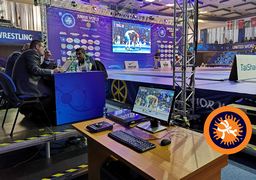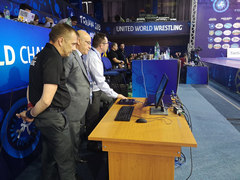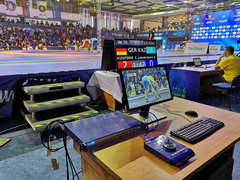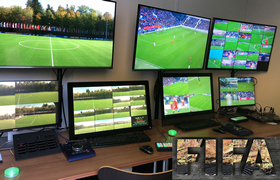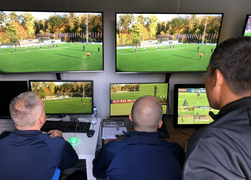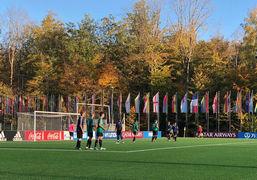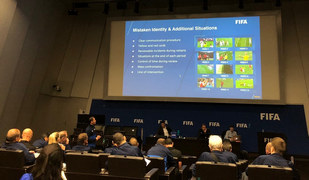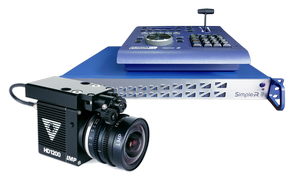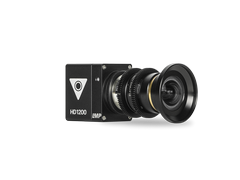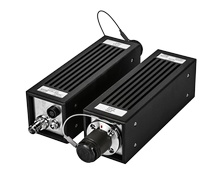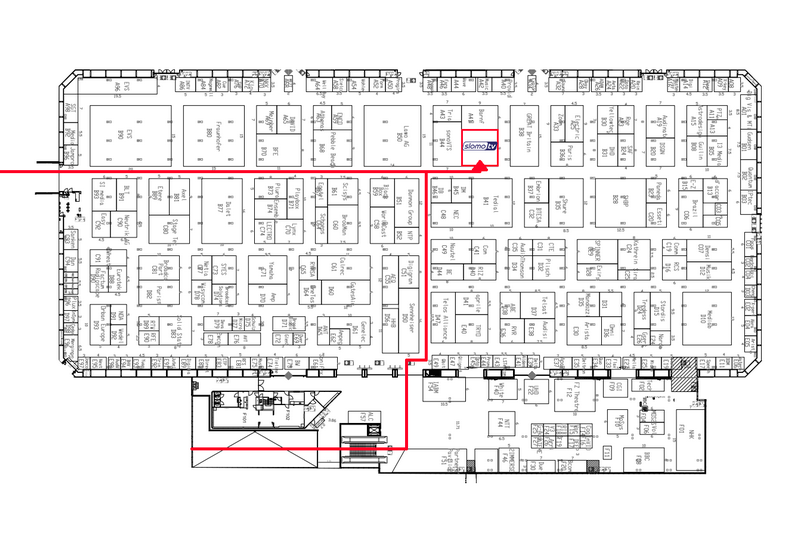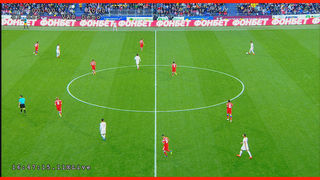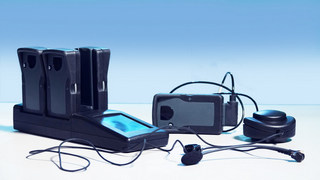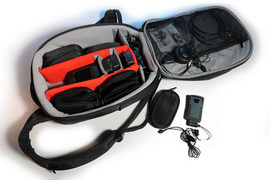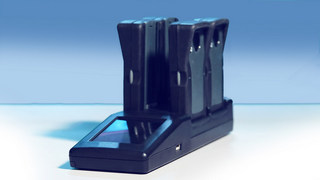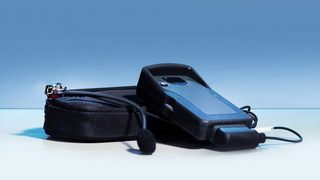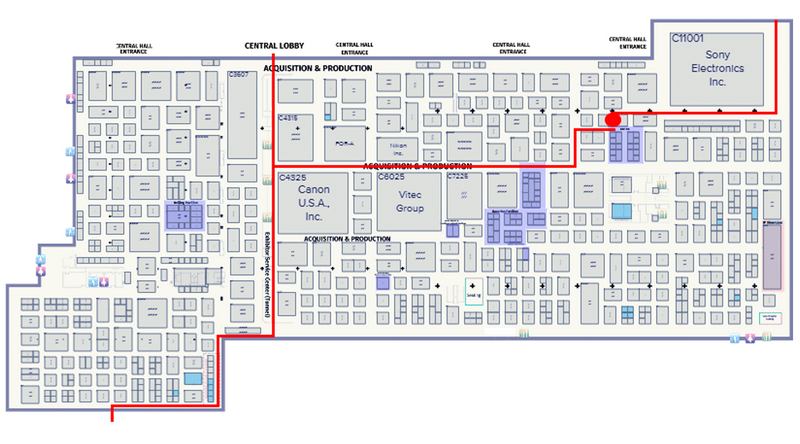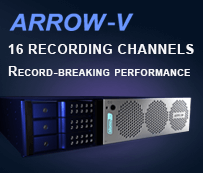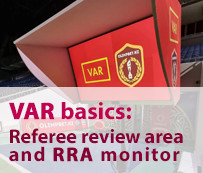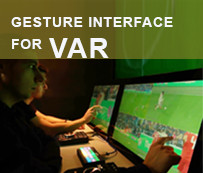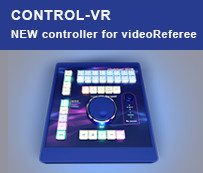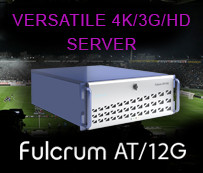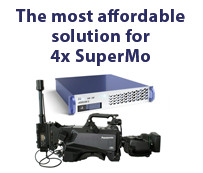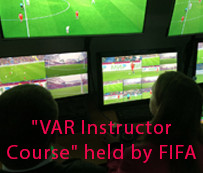- Details
Slomo.tv’s active cooperation with international sports federations on implementation of video judging in various sports has led to the use of videoReferee® solutions in Wrestling.
The United World Wrestling (UWW), that brings together more than 180 national federations of Freestyle, Greco-Roman Wrestling, Women's Wrestling, Pankration, Alysh, Beach Wrestling, etc., chose the compact videoReferee®-SR systems of video judging for its international competitions and signed a contract for supply of three systems for use at the 2018 Senior Wrestling World Championships held in the «Papp László Sports Arena» in Budapest. In October 2018 the Hungarian capital hosted the competition among Greco-Roman and Freestyle wrestlers.
The signing of the contract was preceded by testing of the system at the 2018 Junior World Championships in Freestyle, Greco-Roman and Women Wrestling in Trnava (Slovakia). The judges highly evaluated the usability of the system, and the United World Wrestling remained pleased with the results of the test.
The individual approach of slomo.tv specialists to each customer requirements and regulation of each sport or a single competition resulted in modifying each videoReferee®-SR system to support 2 fully independent workplaces for judges, each working with 4 cameras on his wrestling mat. Thus, one compact 1U server allows carrying out the video judging of two parallel rounds.
This modification became one of the decision-making factors for the United World Wrestling in choosing Slomo.tv. SSD based storage, low weight and compact size of the videoReferee®-SR allow the system to be used as a mobile solution for frequent travel and competition venue changing.
- Details
From the very beginning of discussion about implementation of Video Assistant Referee (VAR) in football, the most popular sport in the world, IFAB and FIFA regularly held various events dedicated to the VAR technology, analysis and discussion of the procedures, processes and education programs for VAR specialists.
Since 2016 slomo.tv collaborates with the International Football Association (IFAB) in the field of implementation of video assistant referee technologies and processes in football. Slomo.tv is included in the official FIFA list of inspected VAR technology providers.
As one of the technology provider, the company regularly participates in IFAB/FIFA events dedicated to VAR, including workshops held in the FIFA headquarter in Zurich.
From 22 to 25 October for the first time in history FIFA held at its headquarters the "VAR Instructor Course".
The main goal of the course was to train the representatives of football federations of more than 20 countries details of using the VAR. The training included theoretical and practical classes. For the practical part technology providers installed their systems so that potential users could get the practical experience of working with the various VAR systems and evaluate them.
Slomo.tv provided a 12-channel compact (1U, 5kg) videoReferee®-SR; a compact video judging system incorporated into standard replay controller "Ripley"; and a new modification of its videoReferee®-FC. The system allows working with 32 3G channels and provides two completely independent workplaces for replay operators (RO). (Extended videoReferee®-FC configuration supports up to 4 workplaces).
The referees had the opportunity to work with live video signals captured from the FIFA training field, where young athletes (U17) constantly created "reviewable" controversial moments. Also 24 channels video from real matches was provided to videoReferee®-FC from the slomo.tv’s «Academy» system, designed for training operators and referee assistants.
Representatives of the football leagues and federations gave high marks to the accuracy and speed of decision-making process using the slomo.tv videoReferee® systems. Powerful servers, well-designed interfaces and control panels, as well as 2 independent workplaces allowed the replay operators (ROs) to review the controversial moments faster than with other systems.
- Details
At IBC2018, Slomo.tv (booth 8.B40), a leading international supplier of cost-effective, high performance server-based video recording and instant replay systems will showcase a new bundle, combining its Simple RII server and the world smallest Lux Media Plan’s true HD camera HD1200.
This game changing solution integrates slomo.tv's 1U compact 8-channel replay server imple RII with Lux Media Plan’s HD1200 mini-camera. The LMP’s camera shoots 120fps for progressive Full HD. It provides crystal clear 50%-speed slow motion video and perfectly meets all requirements of the modern progressive Full HD video world. One Simple RII server in this mode works with 2 such cameras simultaneously.
The compact mobile solution perfectly suits rental companies that need frequently move from one object to another and do quick installations and break downs. The small size of the Simple RII server and mini-cameras HD1200 allows transporting the bundle (1 server +2 cameras) in the standard size case
The key advantage of the solution is the ability to install LMP’s HD1200 via SMPTE Fiber cable in places that are unsuitable for conventional cameras, such as corners of the goal in football, high jumps sector, etc.
The 1U Simple RII is the most compact in the world SSD based broadcast grade instant replay server. It supports 662 configuration (6Rec+6Search+2Play) for HD and 442 for 3G signals. It has a wide range of options: SuperMotion, NLE, videoReferee® application, etc. Intuitive user interface and control panel make the Slomo.tv server easy to understand and operate. Also, it has three graphics outputs and can record up to 266 hours of 100MBit HD video.
All IBC guests are welcome to visit the KMP Lux Media Plan’s stand (10.F21) to explore the new joint solution of slomo.tv and Lux Media Plan.
- Details
Ripley replay server and 4-camera videoReferee® system housed inside a standard size control panel debuts at IBC 2018
At IBC (booth 8.B40), Slomo.tv, a leading international producer of cost-effective high performance video record and instant replay systems, will debut the world’s smallest video replay server. Designated Ripley, this unique video replay server is configured within the form factor of the replay controller.
"Ripley is another significant step that Slomo.tv is taking in making our solutions affordable and desirable for the broadest range of sports production," said Michael Gilman, CEO of Slomo.tv. "This controller/server combo builds on the success of our Simple R and Jr. products: but in this case, our design engineers have succeeded in creating a fully functional server inside a 4.5 kg controller. This opens up a whole new world of opportunities for anybody who wants a broadcast quality slow motion instant replay server for sports and video-judging applications."
- Details
Arrow II 662 – Direct recording in NLE file formats, videoReferee® and Game Analyzer (telestrator) options now available at IBC 2018.
At IBC2018 (booth 8.B40 ), Slomo.tv, a leading international producer of cost-effective, high performance video record and replay systems, will provide a European debut for its cost effective, compact and powerful Arrow II server. First introduced in the US at NAB 2018, Slomo.tv is offering a special price for the basic 442 model, providing four record, four search and two playback with transition channels of Euro 20,000.lomo.tv’s CEO, Michael Gilman, reports that this latest addition to the company’s Dominator range represents the world’s most cost-effective and powerful multi-functional 4K server.
- Details
Slomo.tv is to show a VAR system at IBC that has been used for many years in ice hockey, basketball and handball but which has now been adapted to meet FIFA requirements for football.
A complete integrated video assistant referee (VAR) system is to be introduced at the IBC show by Slomo.tv, a supplier of server-based video recording and replay systems.The system has been used for years across sports such as ice hockey, basketball and handball but has now been adapted to accommodate soccer’s recently introduced FIFA-obligatory requirements.
Designated videoReferee®-FC, the compact 4U video server records up to 24 3G/HD channels and has four graphics outputs. It has a separate multiviewer for all channels capable of displaying live and delayed video.
- Details
We believe that this year's exhibition in Amsterdam is going to be very informative and will impress you.
At our booth 8.B40 (Hall 8) you are welcome to explore:
New* Dominator AT/12G – The first 14 channel 4K replay server in the world
It supports 662 configuration in 4K replay mode (6 Record, 6 Search, 2 Playback with transition effects) and has 2 workplaces for replay operators. The Dominator AT/12G has a large selection of options: support of SuperMo, ExtraMo and HyperMo cameras; networking; export for editing; DMR™ recording direct in NLE file formats; telestrator; additional codecs.
Fulcrum AT/12G - 10 channel 4K replay server
This affordable server for 4K production provides 4 recording, 4 search and 2 playbacks channels. The «Fulcrum AT/12G» has a large selection of options: support of SuperMo, ExtraMo and HyperMo cameras; networking; export for editing; DMR™ recording direct in NLE file formats; telestrator; additional codecs (ProRes 422, DNxHD, DVCProHD, AVC-Intra, XAVC, XDCAM 42, H264 and MJPEG).
Arrow II - Low-cost, but powerful instant replay and production server
The server has 8 bi-directional 3G/HD/SD SDI video ports and build-in storage of up to 533 hours of HD video. «Arrow II» can be remotely upgraded from the basic 442 to a 662 configuration. It is the first budget server with the DMR™ option for direct recording in NLE file formats.
Simple R III - The new generation of our compact 1U Simple R Series
It has 16 universal 3G/HD/SD SDI input/output video ports. No one has ever managed to implement such a large functionality in such a compact 1U server. « Simple R III» can accommodate 2 replay workplaces, each working with 4 incoming signals. In addition, this server can be used as a 12-channel video refereeing system.
New* Ripley - A full-featured server incorporated into control panel
«Ripley» is a full-featured 442 (4 recording, 4 search and 2 playback channel) server that works with HD/SD signals. Optionally, it can be used for video judging with 4 cameras.
The unique feature of «Ripley» is the presence of 4 SDHC standard memory card slots on the side panel. The cards can be used for export and import of video materials, as well as for recording of 4 incoming video signals in H.264 or AVC-Intra 50Mbit.
New* Rapier - Multifunctional 4K graphics system
«Rapier» is an affordable system for 4K graphics design. It is perfectly suited for TV channels and programs, sports events and may be used for displaying information on large video screens.
The user is able to work with a wide range of objects with static and changing content, effects and animations. Modular structure of the system provides ample opportunities for integration with various equipment and data sources.
New* videoReferee®-FC – Complete integrated video assistant referee (VAR) system
The system accommodates recently introduced FIFA requirements. The compact 4U video server records up to 24 3G/HD channels and provides two fully functional and independent work places. Referees can analyze the action frame-by-frame, simultaneously from several different camera angles.
Also, it is possible to quickly prepare and perform analysis of questionable moment at the assistant’s work place and transfer it during the match to the field monitor for review by the main referee.
The videoReferee® based VAR system setup includes:
- Touch-screen monitors
- Interfaces for integration with Intercom system (Vokkero)
- Back-lit Red and Green buttons for event marking and controlling intercom with the referee on the field
- vR-Keypad, which enables the assistant to mark and label in-play moments for subsequent or immediate search
- SDI output for integration within broadcast
If you would like to make an appointment for a day and time that suits you best, please email
We look forward to meeting you at IBC 2018.
- Details
4K instant replay server claimed to be World’s most affordable and powerful multi-functional 4K Server
At IBC (stand 8.B40), Slomo.tv, a leading international producer of cost-effective, high performance SSD-based video record and replay systems, has ripped up the server rule book. The company will launch a new aggressively priced server, designed especially for fast growing 4K market. Slomo.tv’s CEO, Michael Gilman, reports that this latest addition to the company’s Dominator range represents the world’s most cost-effective and powerful multi-functional 4K server.
- Details
The implementation of the Video Assistant Referee (VAR) system in football was intended to help the pitch referee in difficult situations increase the objectivity of refereeing. Interaction and verbal communication between the pitch referee and the VAR is made via a specialized radio communication system. To ensure the decision-making transparency of controversial moments all communications between the VAR and the pitch referees must be recorded and logged.
Organizing a reliable and private communication channel on the field is quite a challenge. The Vokkero® intercom system has become the de facto standard for radio communications at sporting events. It ensures reliable voice communication by using digital, secure technology, compliant with the requirements for VAR in football. Another advantage of this communication system (the Vokkero®) are the securely weared lightweight compact Phonak headsets.
Slomo.tv integrated its VAR systems with Vokkero® intercoms. The goal of the integration was to receive audio and control the communication channels between the intercom beltpacks. In accordance with VAR regulations, the communication channel is activated by pressing the red button, which turns on the microphone of the VAR referee's headset and starts recording the conversation between the VAR and the referee on the pitch. As long as the button is pressed, the recording is in progress. A red frame on the referee’s monitor screen indicates that the radio channel is activated and the recording is on. Releasing the button interrupts the communication and stops the recording. Simultaneously with pressing the button, an event mark is created, which facilitates the subsequent search for the desired moment of the conversation of the VAR and/or his assistant (AVAR).



